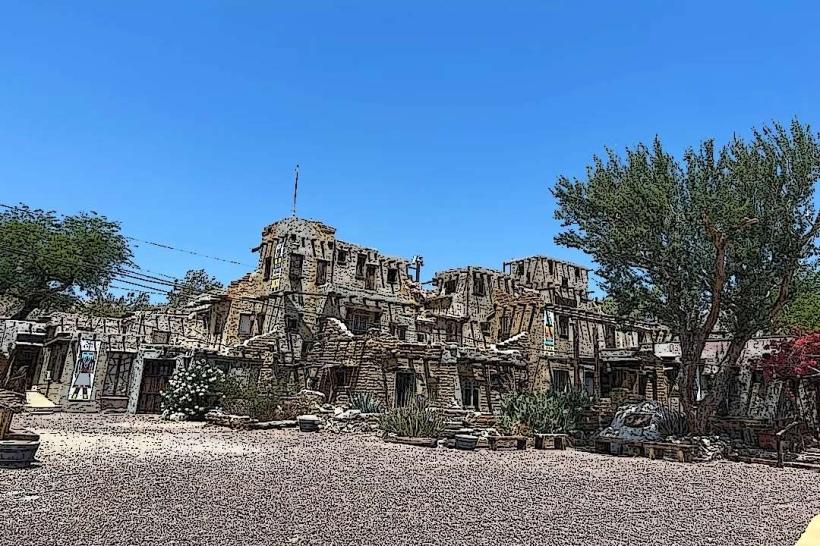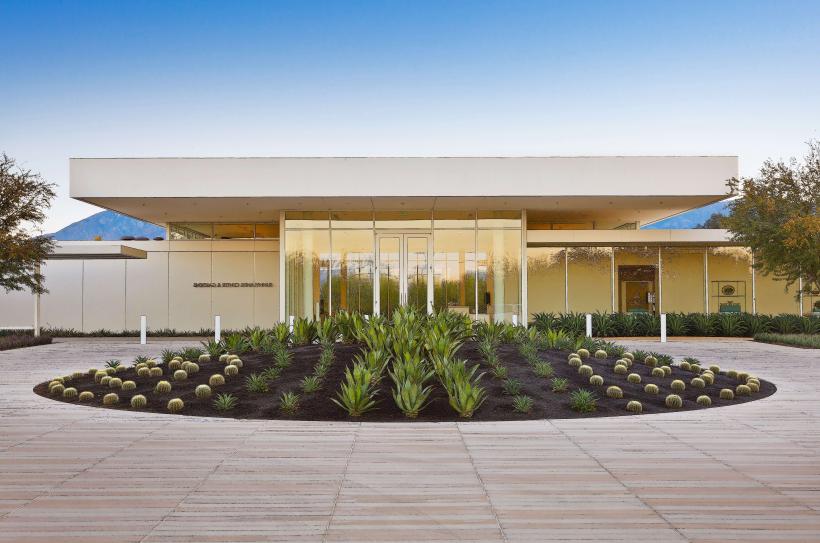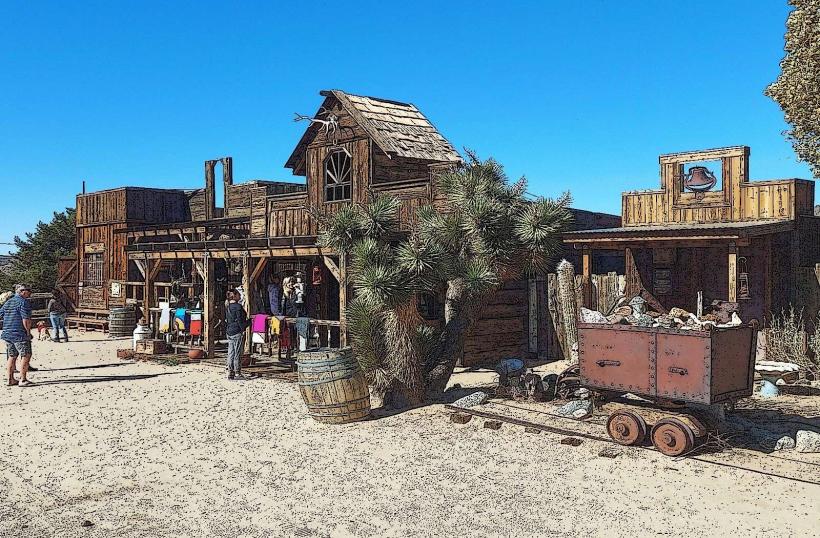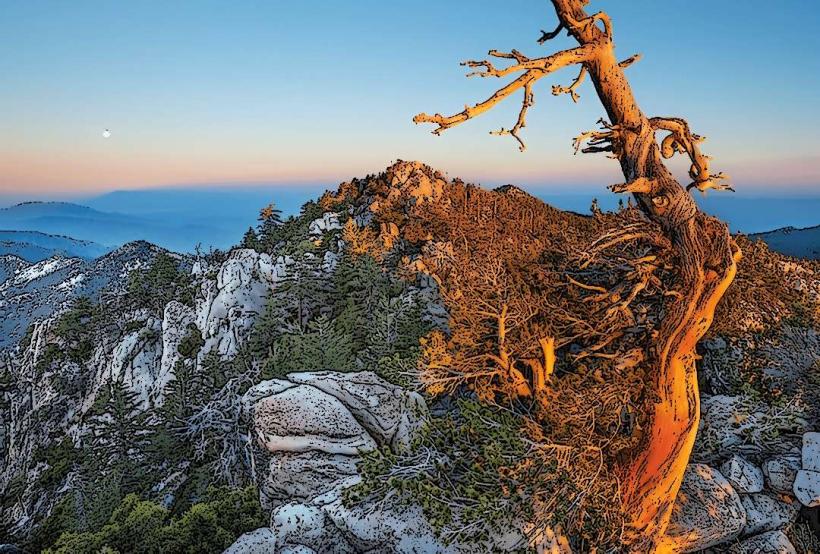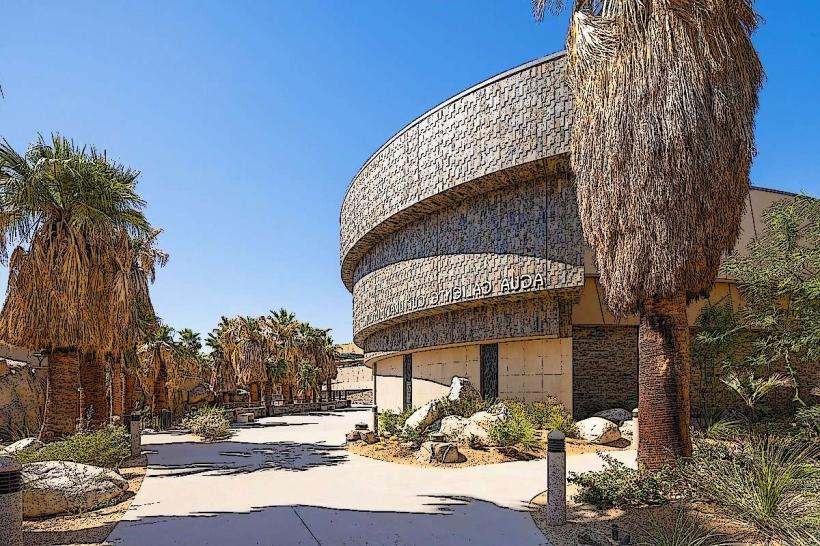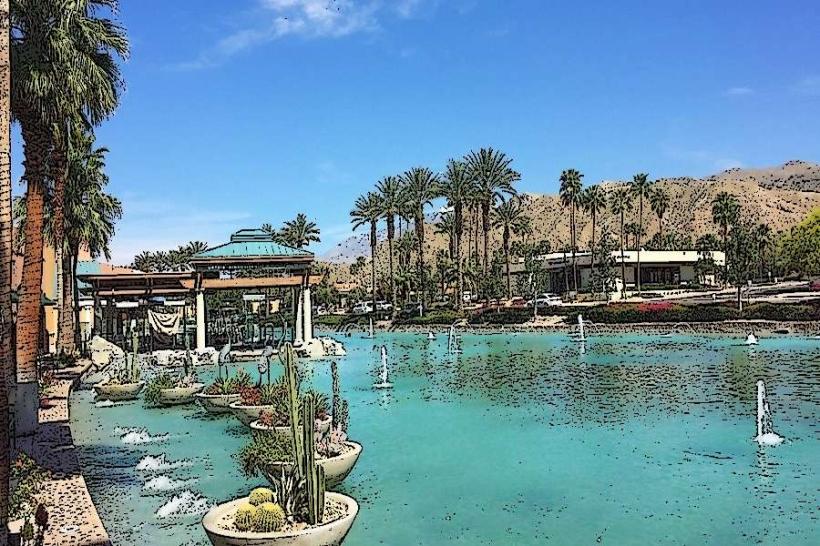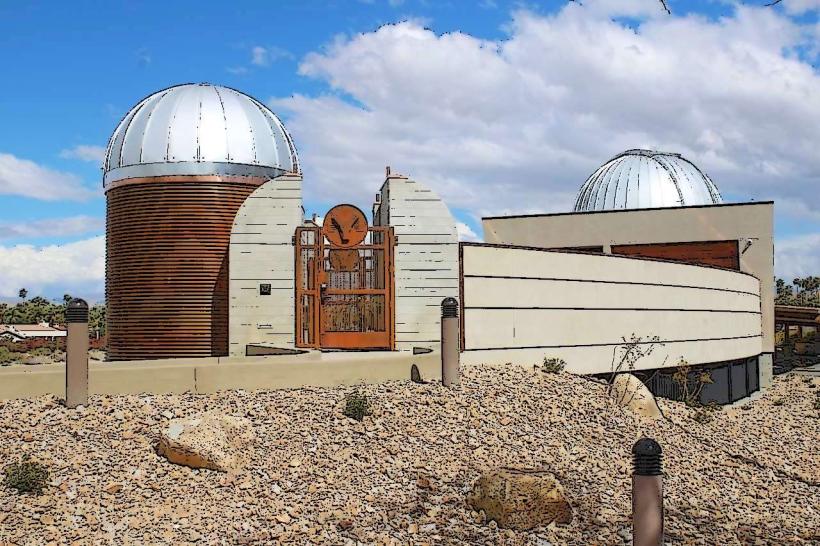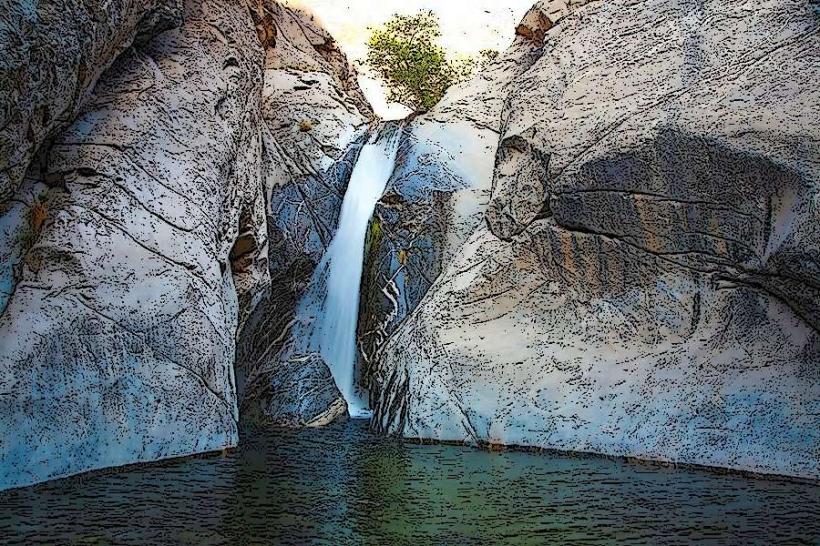Information
Landmark: Indian CanyonsCity: Palm Springs
Country: USA California
Continent: North America
Indian Canyons, Palm Springs, USA California, North America
Indian Canyons, located in the Coachella Valley near Palm Springs, California, is a breathtaking collection of canyons and desert landscapes that hold great cultural and historical significance. This area, managed by the Agua Caliente Band of Cahuilla Indians, offers visitors the opportunity to explore ancient sites, lush oases, and scenic hiking trails.
Overview
Indian Canyons is composed of several distinct canyons, including Palm Canyon, Andreas Canyon, and Murray Canyon, each offering unique features and trails. These canyons are lush, verdant oases surrounded by desert landscapes, where the abundant water sustains a variety of plants and wildlife. The canyons have been inhabited by the Cahuilla people for thousands of years, and the area remains a cultural center for the tribe.
Key Canyons and Attractions
1. Palm Canyon
Palm Canyon is the largest and most well-known of the canyons in the area. It is famous for its population of California fan palms (Washingtonia filifera), the only native palm tree species in California. These palms grow in the canyon's lush oasis, sustained by a natural spring.
Palm Canyon Trail: A popular hiking trail in Palm Canyon, this 3-mile round-trip trek takes visitors through a beautiful desert landscape to a vibrant palm oasis. Along the way, you’ll see ancient palm groves, desert flora, and even remnants of the Cahuilla people’s historical settlements.
Historic Significance: Palm Canyon is not just known for its natural beauty; it also holds cultural significance. The Cahuilla people have lived in this area for thousands of years, and their historical presence is evident through artifacts, rock art, and the remnants of old dwellings.
2. Andreas Canyon
Andreas Canyon is a smaller, but equally scenic canyon, offering a more tranquil experience. Known for its shady palm groves and lush vegetation, Andreas Canyon is home to a diverse array of plant and animal species.
Andreas Canyon Trail: This short, easy trail (1 mile round-trip) takes hikers along the cool, shaded banks of a stream that flows through the canyon. The trail is lined with fan palms and native desert plants, making it a great spot for birdwatching and photography.
Cultural Significance: The area was historically used by the Cahuilla for gathering food and water. Visitors can learn about the traditional use of native plants and the history of the area through interpretive signs along the trail.
3. Murray Canyon
Murray Canyon is a more remote canyon, known for its peaceful solitude and the opportunity to see desert wildlife. The canyon is not as frequently visited as Palm or Andreas Canyons, making it a good choice for those seeking a quieter, more secluded experience.
Murray Canyon Trail: A 3.5-mile round-trip trail that takes visitors deeper into the desert. This trail offers a more rugged experience and provides an opportunity to explore the desert's natural beauty while learning about its ecology and history.
4. Agua Caliente Cultural Museum and Visitor Center
The Agua Caliente Cultural Museum, located at the base of the canyons in Palm Springs, is an excellent place to start your visit. The museum offers exhibits and information about the history and culture of the Cahuilla people. Visitors can learn about the tribe's traditions, art, and historical connections to the land, including their long relationship with the canyons.
The visitor center at the entrance to the canyons provides maps, information, and educational resources, including guided tours and cultural programs. It’s a great place to get an overview of the area before exploring the trails.
Wildlife and Flora
The canyons are home to a wide variety of wildlife and plant species, thanks to the year-round water provided by natural springs. In addition to the iconic California fan palms, the area features other desert plants such as agave, creosote, ocotillo, and yucca. In the spring, the canyons are often dotted with wildflowers in vibrant colors.
Wildlife in the area includes desert bighorn sheep, coyotes, bobcats, and a variety of bird species, including road runners and quail. The presence of water also attracts a range of reptiles, including desert tortoises and various species of lizards.
Cultural and Historical Significance
The Cahuilla people have lived in the Coachella Valley for thousands of years, and the Indian Canyons were central to their way of life. The Cahuilla people used the land for hunting, gathering, and ceremonial purposes. They created rock art and built structures, some of which can still be seen in the canyons today.
Visitors can learn about the cultural importance of the canyons to the Cahuilla people through interpretive signs, guided tours, and exhibits at the Agua Caliente Cultural Museum. The tribe continues to play an important role in the preservation and stewardship of the land, maintaining its cultural significance.
Recreational Activities
Indian Canyons is a year-round destination offering a wide range of outdoor activities:
Hiking and Walking: There are several trails of varying difficulty throughout the canyons, ranging from easy, short walks to more challenging treks. Most trails are well-marked and offer scenic views of desert landscapes, canyons, and oases.
Photography: The dramatic desert landscapes, lush palm groves, and clear skies make Indian Canyons an excellent location for photography. Early morning and late afternoon provide the best lighting for capturing the beauty of the canyons.
Wildlife Watching: The canyons are an excellent place for wildlife watching, particularly for birdwatchers. The diverse ecosystems of the canyons attract a variety of bird species, and visitors may also encounter desert mammals, reptiles, and insects.
Cultural Tours: Guided tours, often led by members of the Agua Caliente Band of Cahuilla Indians, offer an in-depth look at the history, ecology, and cultural significance of the area. These tours are a great way to learn about the indigenous culture and the importance of the land to the Cahuilla people.
Visitor Information
Fees: Entry to Indian Canyons requires a fee, typically around $9 per adult. Fees help support the conservation and maintenance of the area.
Hours: The canyons are typically open daily, but hours may vary, particularly during holidays or special events.
Access: The canyons are located just a short drive from Palm Springs. The entrance is well-marked, and there is parking available near the visitor center.
Conclusion
Indian Canyons is a place of natural beauty and cultural significance, offering visitors a chance to explore the desert's lush oases, ancient rock art, and hiking trails. Whether you’re interested in outdoor activities like hiking and wildlife watching or learning about the rich history and culture of the Cahuilla people, Indian Canyons provides a unique and immersive experience. The area’s serene landscapes and fascinating history make it a must-visit destination for those exploring the Coachella Valley.

